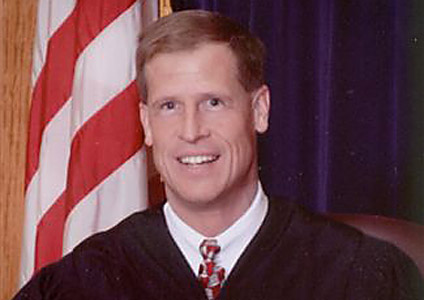In the middle of a bout with the saber-rattling Bureau of Land Management over frac’ing regulations, the oil and gas industry is, it would seem, nearly back to “business as usual.”
by Tony Burke
Hydraulic fracturing was developed to stimulate wells and increase production. The practice’s experimental infancy dates back well over a half-century. As with processes employed in any other human endeavor, techniques evolve with time and become more efficient. Gathering more product, and doing so with greater efficiency and with a smaller impact on the environment, is the ideal pathway to better, more profitable operations. This is a secret to no one in oil and gas.
There has been a great deal of governmental activity surrounding frac’ing as the final few months of the current Presidential administration wind down. By implementing rules that would alter oil and gas operations, without appreciably improving them, it would appear that the administration, working through the Bureau of Land Management, is attempting to claim some level of credit for work that has been done long ago. The reason this legislation appears tone-deaf at best, and malicious at worst, is that it fails to recognize how far the industry has come on its own, and to appreciate the ongoing work that goes into continuous improvement.
In June, U.S. Federal District Judge Scott Skavdahl, of Wyoming, rebuked the Bureau of Land Management’s (BLM) proposed regulation of hydraulic fracturing. Judge Skavdahl, nominated by President Obama in 2011, refused to make this issue a referendum on the practice of hydraulic fracturing itself, maintaining that it was strictly a question of jurisdiction, which, as it was determined, BLM did not have.
Back on Mar. 20, 2015, shortly after the BLM finalized its proposed rules to regulate frac’ing, the Independent Petroleum Association of America (IPAA); the Western Energy Alliance; the states of Colorado, North Dakota, Utah, and Wyoming; and Ute Indian tribe filed suit on grounds of government overreach and the redundancy of the proposed rules—a redundancy that they contended was clear when one considers the comprehensive and pre-existing regulations of each individual state.
“Given enactment of the EP [Energy Policy] Act of 2005, to nonetheless conclude that Congress implicitly delegated BLM authority to regulate hydraulic fracturing lacks common sense,” wrote Skavdahl in his official ruling. “Congress’ inability or unwillingness to pass a law desired by the executive branch does not default authority to the executive branch to act independently, regardless of whether hydraulic fracturing is good or bad for the environment or the Citizens of the United States.”
As cited in Skavdahl’s decision, interpretation of the Energy Policy Act of 2005, an act that expressly forbade the EPA from regulating hydraulic fracturing, was at the crux of this ruling. Express Congressional legislation would be required for this to change. Thus, frac’ing regulation will continue to lie in the hands of the states with the exception of frac’ing involving diesel fuels, which is in fact under EPA jurisdiction.
The outpouring of applause for the decision from industry supporters was strong, as expected. In the August issue of PBOG, PBPA Chairman Danny Campbell and President Ben Shepperd both addressed the then-breaking news in their monthly columns.
“A check and a balance,” wrote Campbell. “This is not the first time the current administration’s ‘legislative’ efforts were halted by the courts, and hopefully it won’t be the last.”
“It seems like every week, a new attack is aimed in our direction,” wrote Shepperd. “While I was attending the Independent Producers Association of America [IPAA] meeting last month, we discussed that there were 24 sets of regulations we are all working through. This train is long and wide.”
“Today’s decision demonstrates BLM’s efforts are not needed and that states are—and have for over 60 years been—in the best position to safely regulate hydraulic fracturing,” an IPAA spokesperson stated to the Associated Press, following the decision.
U.S. Rep. Cynthia Lummis, of Wyoming, commended the decision, saying “the careful and efficient regulation” of states, including Wyoming, would be undermined by the Obama administration’s rules.
On the other side of the coin, Lena Moffitt, director of the Sierra Club’s Beyond Dirty Fuels campaign, suggested that there is still a fundamental breakdown in understanding the nature of fossil fuels and the processes involved in hydraulic fracturing. She said, “While there is no way to ever make frac’ing safe, the oil and gas industry has repeatedly proven that it needs more standards to keep the public safe from the dangers of fossil fuels, not less.”
With the certainty of the rising sun, the gears of the appeals process are turning, and defenders of the frac’ing rule hope for a favorable appeal from the 10th U.S. Circuit Court of Appeals by the end of this year.
According to Western Energy Alliance, several lines of defense are in place against this appeal, including “Administrative Procedure Act challenges regarding BLM’s failure to justify the rule and follow regulatory procedures.” WEA elaborated in an article posted on their website: “Because Judge Skavdahl ruled that BLM lacks statutory authority, he did not address our claims related to the APA. We are confident that these procedural claims, once fully considered by the 10th Circuit Court, will be equally compelling.”
“Another possible administrative action that could, and hopefully will, meet a similar fate in the courts is the BLM’s proposed rules on venting and flaring,” wrote Campbell, in the August issue of PBOG. “It was argued by the PBPA and many others through official comments submitted to the BLM, that these proposed rules are ‘arbitrary and in excess of BLM’s legal authority… [and that the]… Rule is in many respects focused on reducing methane emissions, which the BLM lacks authority to do, rather than preventing the “waste” of natural gas.’”
Earlier this year, the BLM finalized its rules regarding the issues of venting, flaring, and leaking, which stirred the industry to its own defense in similar fashion. These additional regulations proposed by the BLM have yet to have their day in court.
According to Erik Schlenker-Goodrich, executive director of Western Environmental Law Center, the BLM, as steward of the pubic lands, has an “obligation to manage oil and gas resources in the public interest.”
Key rationale for further regulating venting, flaring, and leaking from wells on public lands has been rationalized with the following verbiage (as appeared on InsideClimateNews.org): “Between 2009 and 2014, 375 billion cubic feet of methane was vented, flared, or leaked from oil and gas facilities on public and tribal lands—enough to power more than 5 million homes for a year, according to the Interior Department.”
The statistics provided are impactful, but they fail to recognize the built-in incentive that oil companies have for policing themselves in this regard. They also obscured the fact that the energy needed to power “5 million homes for a year,” or the amount that would supposedly be saved by new regulations, was leaked over a five-year period. This means, on a per-year basis, the power saved would be a very small fraction of 1 percent of the total power used to heat the nation’s approximately 125 million households each year. The percentage is further reduced by these figures not accounting for the many non-residential properties that require power.
The proposed regulations may be relatively inexpensive, but they do raise the question of whether or not the law of diminishing marginal returns applies. The product saved and the royalties recovered by all involved parties would not necessarily justify the added production cost.
As reported by Bloomberg in June, conservationists backing the BLM in this matter feel the legislation has “solid legal footing because a 1920 law governing U.S. mineral leasing specifically directs actions ‘to prevent waste of oil or gas’ developed on federal lands.”
Barrel prices are experiencing a cautious uptick, and just in time for the legislators lining up for their pounds of flesh. But this is nothing new for oil and gas, as the industry will continue hand-in-hand in its contentious marriage with energy legislators nonetheless.
Tony Burke is a freelance writer and the assistant editor of PBOG. He can be reached at tburke@zacpubs.com












